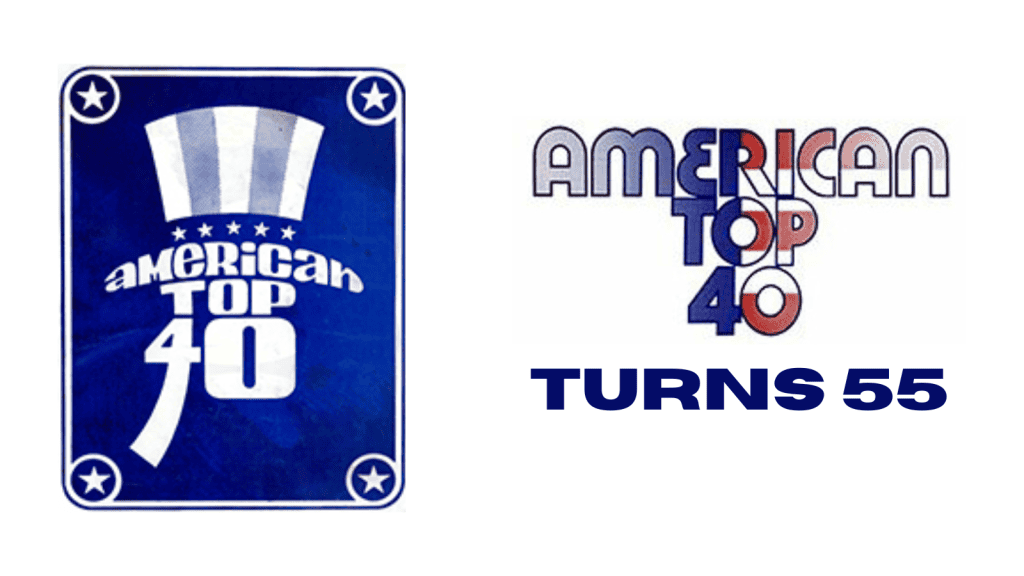AT 40 at 55
On the Fourth of July weekend in 1970, America was still catching its breath from the cultural detonation of the previous decade. A new program came to life on just seven radio stations. “Here we go with the Top 40 hits of the nation this week on American Top 40,” the voice intoned. “The best-selling and most-played songs from the Atlantic to the Pacific, from Canada to Mexico.” It didn’t sound like revolution. It sounded like reassurance.
The voice belonged to Casey Kasem, a Detroit Northwestern alumnus who was still young enough to emulate kids voices on The Lone Ranger and The Challenge of the Yukon at the end of long-form radio’s golden age. After. Drafted to serve in Korea in 1952, he sharpened his chops on the American Forces Network, before returning to Flint and ultimately WJBK with a major market confidence and a sense that the audience wanted to know more about the music and artists they were hearing.
The program Casey launched that July weekend in 1970 was part countdown, part national group therapy session. It would quietly redefine not just radio, but the very idea of the musical mainstream.
One of the treasures I rescued from the dumpster at WVIC, where I ran Casey’s board on Sunday afternoons was the original AT 40 broadcast. When the show premiered, Top 40 was seen as yesterday’s news, an AM relic losing ground to FM’s headier, album-oriented fare. In that context, American Top 40 seemed like a curio, earnest, maybe even square. But over the next two decades, it would become something else entirely: a kind of weekly secular liturgy, simultaneously precise and sentimental, deeply American in both its sweep and its specificity.
The show’s blueprint was disarmingly simple. Take the Billboard Hot 100—the gold standard of chart data, derived from record sales and radio play—and count down, song by song, from number 40 to number one. There was no regional bias. Casey’s delivery was straight forward, devoice of DJ ego. The list was the gospel. But the show’s real genius lay not in its format but in its heart: Casey Kasem himself.
His voice—resonant, slightly nasal, infinitely warm—was its own kind of instrumentation. It didn’t perform the songs; it interpreted them. He didn’t just play the hits; he narrated them. With the deft storyteller’s instinct, polished at WJBK, he wove together chart positions and biographies, personal trivia and dramatic irony. This wasn’t just pop music; it was a pageant of hopes and heartbreaks, American dreams scored to the backbeat of bubblegum pop and power ballads.
The signature narrative structure—part countdown, part human-interest segment—traced back to a moment of improvisation. In the early ’60s, Casey had made it to Oakland, California and was trying to find his center. The station manager instructed him to “just be himself.” Rummaging through a trash bin, Kasem found a copy of Who’s Who in Pop Music, 1962, and began spinning stories from the bios he discovered there, a concept first tested in the earliest days of Top 40 in Detroit.
Thus was born the “teaser and bio” technique: tell a tale, pause for suspense, then play the song. The format offered a subtle affirmation—that behind every song was a person, and behind every person, a story worth telling.
That ethos reached its most distilled form in the “Long-Distance Dedication,” introduced in 1978. Here, American Top 40 became something altogether more intimate. Before Twitter threads and TikTok overshares, there were handwritten letters—addressed simply to Casey, wherever he might be—and each was a miniature epic. A soldier longing for his wife, a teenager inviting Cheryl Ladd to prom, a child pledging loyalty to a stuffed Raggedy Andy doll. Read aloud in Casey’s steady cadence, they transcended corniness. They became dispatches from the emotional underground of the American experience.
In these moments, the show became more than a survey of musical taste. It became a kind of emotional census. It measured not just what we bought and played, but what we felt. The Top 40 became a shared text—one you didn’t just listen to, but lived alongside.
Sound familiar? This mirrored Keener’s secret sauce. Play music the audience likes. And engage with them. It was a winner in the Keener era. And it blossomed into an international phenomenon.
By the late 1980s, American Top 40 had gone global, broadcast in over fifty countries. But even as its reach expanded, its cultural position grew precarious. The monoculture the Keener generation grew up with was fracturing. In 1991, Billboard swapped its reporting methodology, turning to Nielsen’s computerized SoundScan, which revealed the undercounted popularity of genres long dismissed by advertisers—hip-hop, grunge, country. American Top 40, once the grand mirror of national taste, blinked.
Rather than reflect this new reality, the show pivoted. On November 30, 1991, it abandoned the Hot 100 altogether, opting for a sanitized, airplay-only chart. In doing so, it ceased to be a chart of the people and “followed the format,” becoming a show curated for a particular audience segment. The countdown that had once represented a broad musical consensus began to reflect something narrower—a parallel mainstream, scrubbed of what some programmers considered too unruly, too urban, too real.
At WVIC, even the sanitized version pressed boundaries. I vividly remember being told to excise Billy Joel’s smash hit “Only the Good Die Young,” when it ran counter to the religious sensibilities of our owner. Echoes of December, 1966, when the owner of what is now Keener13.com was uncomfortable with the lyrics of Tommy James’ “I Think We’re Alone Now,” a national smash that wasn’t in rotation on Keener until connubial mores relaxed and tunes like “Judy In Disguise (With Glasses)” became universal favorites.
AT 40 shuttered in 1995. But Casey, ever the voice in the wilderness, returned four years later when the rights to the name reverted to him. In 2004, he handed the reins to Ryan Seacrest, an icon of a different era—slicker, faster, more promotional. The stories faded; the dedications, if they survived, became just another feature. Today’s American Top 40, powered by Mediabase data and embedded in iHeartMedia’s sprawling content empire, is less a ritual than a brand extension—a countdown in the service of synergy.
Still, the spirit of the original lingers. On weekends, old broadcasts are re-aired on terrestrial radio stations across the country. Listeners—many of them now grandparents—tune in not just for nostalgia, but for a glimpse of a cultural moment that once felt binding. In those rebroadcasts, we hear a different kind of algorithm: one run on curiosity, empathy, and the quiet conviction that every number on the chart might really be a human heartbeat.
AT40 is discussed on social media, often in sync with playbacks on Sirius/XM, where listeners discuss their own memories associated with that time and place. And hundreds of young people, like me, learned how to entertain while spinning the vinyl long-playing albums which religiously appeared in our control rooms in time for our listeners’ weekly spiritual conclave.
What Casey offered, week after week, was not just a reflection of popular music but a vision of connection. In a splintered world of playlists and push alerts, the idea of millions of people listening to the same voice at the same time seems almost fantastical. But that was the magic. Like listening to Ernie Harwell call a Tigers game on a Saturday afternoon, Casey didn’t just provide play-by-play. He created communion.
And always, he signed off the same way. If you ever listened to the show, you know it by heart. The kind of gentle optimism that feels almost radical now: “Keep your feet on the ground—and keep reaching for the stars.”
Bobby Sherman – A Quiet Finale

By June 24, 2025, the world had fallen silent—not with the frenzy that once trailed him, but with a gentle stillness. Bobby Sherman, the sweet-faced teen idol of the late 1960s, died at 81, his final days marked by the same modest grace that shaped his life.
A milkman’s son from Van Nuys, Sherman was discovered at a party, singing Ray Charles to a room of Hollywood insiders. Soon, he was on Shindig! and starring as Jeremy Bolt in Here Come the Brides. His boyish charm and bubblegum pop hits like “Little Woman” and “Julie, Do Ya Love Me” made him a fixture on magazine covers—and in girls’ bedrooms. At his peak, fans followed him in such numbers that decoy limos were used to throw them off the trail.
But fame never held him hostage. As pop culture shifted, so did he. By the mid-’70s, Sherman had left the stage for something more grounded: emergency medicine. He became an EMT, trained police cadets in CPR, delivered babies in transit, and later served as a reserve deputy sheriff. In 1999, the LAPD named him Reserve Officer of the Year.
With his wife Brigitte, he later founded a nonprofit for children in Ghana, quietly channeling his fame into service. When he was diagnosed with Stage 4 cancer this spring, she shared the news. On June 24, he died peacefully, hand in hand with her.
Sherman’s stardom lasted just a few golden years. His legacy—humble, lifesaving, enduring—lasts far longer. He left the spotlight early, not because he faded, but because he chose to shine somewhere else.
Lou Christie – The Voice That Pierced the Sky
 To hear a Lou Christie song on Keener for the first time was to experience something more than sound—a kind of pop exclamation mark hurled through a world of four-part harmonies and teenage platitudes. In a musical landscape dominated by the earnest chin-stroking of folk singers and the tight, syncopated machinery of Detroit’s Motown, Christie’s voice arrived like a lightning strike, cutting clean through the Keener airwaves. It was a helium-soaked, heaven-scraping falsetto that didn’t so much sing as spiral—vertiginous, improbable, and entirely unafraid of absurdity. It sounded less like a young man’s croon than the internal monologue of adolescence itself: dramatic, operatic, always on the verge of a glorious crack-up. Continue reading “Lou Christie – The Voice That Pierced the Sky” →
To hear a Lou Christie song on Keener for the first time was to experience something more than sound—a kind of pop exclamation mark hurled through a world of four-part harmonies and teenage platitudes. In a musical landscape dominated by the earnest chin-stroking of folk singers and the tight, syncopated machinery of Detroit’s Motown, Christie’s voice arrived like a lightning strike, cutting clean through the Keener airwaves. It was a helium-soaked, heaven-scraping falsetto that didn’t so much sing as spiral—vertiginous, improbable, and entirely unafraid of absurdity. It sounded less like a young man’s croon than the internal monologue of adolescence itself: dramatic, operatic, always on the verge of a glorious crack-up. Continue reading “Lou Christie – The Voice That Pierced the Sky” →
The Beatles’ EMI vs. Capitol Albums: How America Remixed the British Invasion
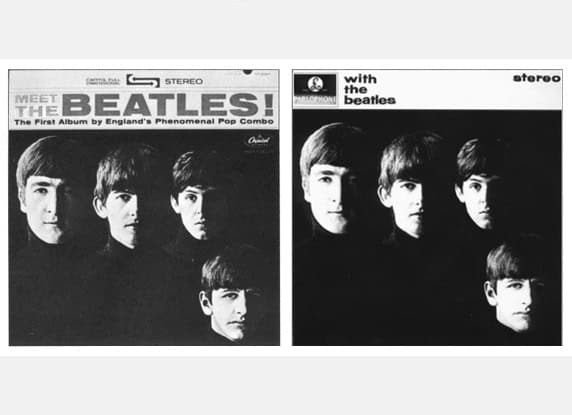 When Beatlemania exploded on Keener, it wasn’t just a cultural phenomenon, it was a marketing war. On one side of the Atlantic stood EMI’s Parlophone label, helmed by producer George Martin and engineer Geoff Emerick, who shaped the Beatles’ artistic journey with a balance of studio innovation and British sensibility. On the other, Capitol Records, EMI’s American subsidiary, played the hits game with a nose for profit. The result? Two Beatles discographies: one curated by the band and their producer, the other chopped, shuffled, and rebranded for U.S. ears.
When Beatlemania exploded on Keener, it wasn’t just a cultural phenomenon, it was a marketing war. On one side of the Atlantic stood EMI’s Parlophone label, helmed by producer George Martin and engineer Geoff Emerick, who shaped the Beatles’ artistic journey with a balance of studio innovation and British sensibility. On the other, Capitol Records, EMI’s American subsidiary, played the hits game with a nose for profit. The result? Two Beatles discographies: one curated by the band and their producer, the other chopped, shuffled, and rebranded for U.S. ears.
And those differences? They tell a deeper story about the transatlantic tug-of-war between artistry and commerce. Continue reading “The Beatles’ EMI vs. Capitol Albums: How America Remixed the British Invasion” →
Remembering Brian Wilson
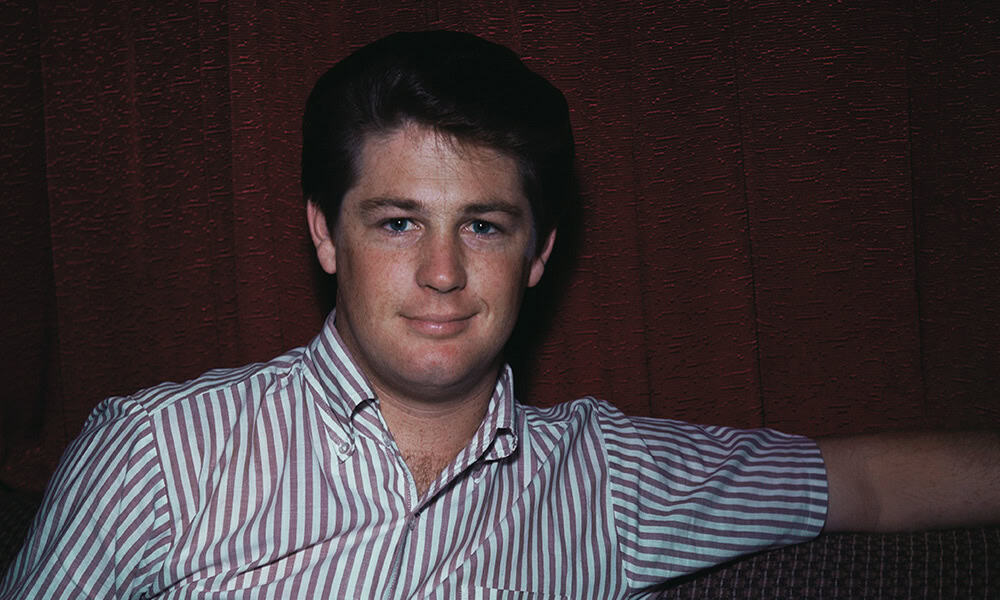 There was always a peculiar geometry to the music of Brian Wilson, a sense of vast, sun-bleached space being meticulously organized inside the four walls of a recording studio. To hear of his passing at eighty-two is to imagine the door to that studio finally closing, a quiet click after decades of miraculous, agonizing noise. Continue reading “Remembering Brian Wilson” →
There was always a peculiar geometry to the music of Brian Wilson, a sense of vast, sun-bleached space being meticulously organized inside the four walls of a recording studio. To hear of his passing at eighty-two is to imagine the door to that studio finally closing, a quiet click after decades of miraculous, agonizing noise. Continue reading “Remembering Brian Wilson” →
Keener Today – June 3
It was a rare moment in time when Steve Schram and I were in the same place without anyone demanding our time. We were both independent agents with a lot more resume paragraphs ahead of us. As was our practice during the days when we roomed together in college, we were sifting through my collection of 45s and reel to reel tapes. Around 3am on June 3, 2002, I threaded the PAMS Clyde jingle demo into the machine and turned up the volume. Continue reading “Keener Today – June 3” →
Keener Today – May 24

Today in History:
- 1844 – Samuel F.B. Morse gave the first public demonstration of his telegraph by sending a message from the Supreme Court Chamber in the U.S. Capitol in Washington, D.C. to the B&O Railroad “outer depot” (now the B&O Railroad Museum) in Baltimore. The famous message was, “What hath God wrought?” Continue reading “Keener Today – May 24” →
Keener Today – May 23
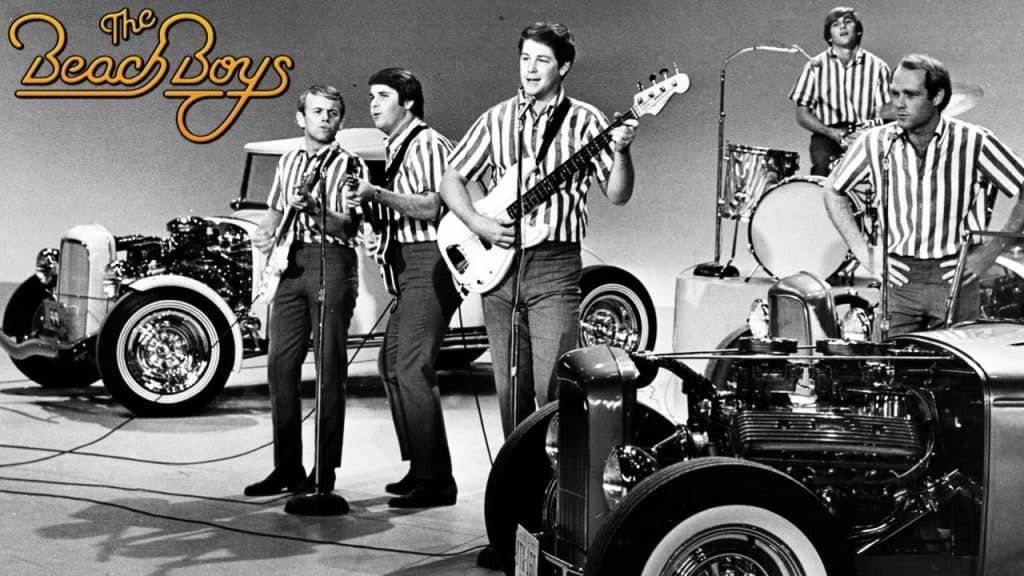
What’s happening:
Billy Joel has canceled all upcoming concerts, including a major stadium tour, due to a brain condition called normal pressure hydrocephalus, which has affected his hearing, vision, and balance. The 76-year-old singer is undergoing physical therapy and says he’s “sincerely sorry” to disappoint fans. More. Continue reading “Keener Today – May 23” →
Keener Today – May 22
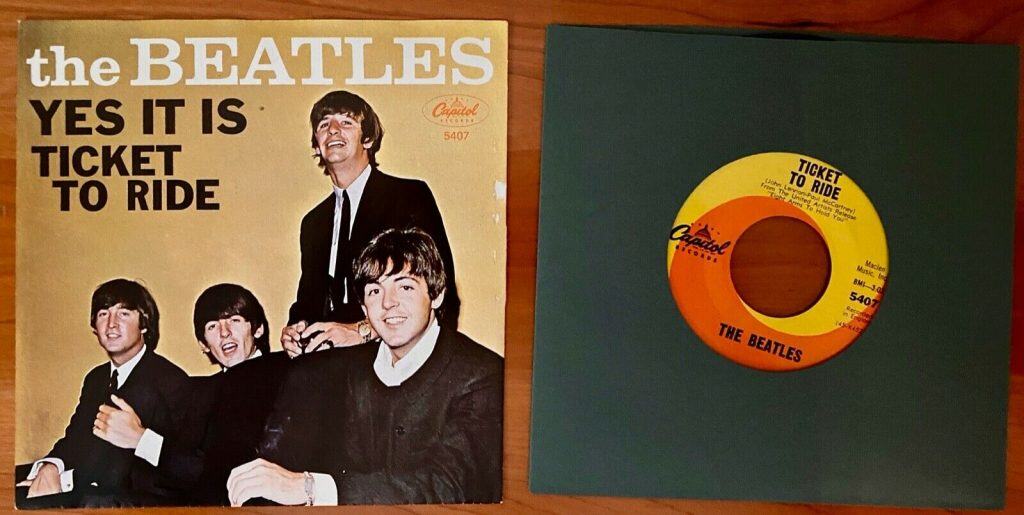
Did You Know:
The Stanley Hotel — famous for inspiring Stephen King’s The Shining — is set to undergo a change in management as Sage Hospitality Group partners with the Colorado Educational and Cultural Facilities Authority to oversee the historic property. The collaboration aims to preserve the landmark’s legacy while generating $45 million over 36 years to support cultural initiatives. Continue reading “Keener Today – May 22” →
Keener Today – May 21
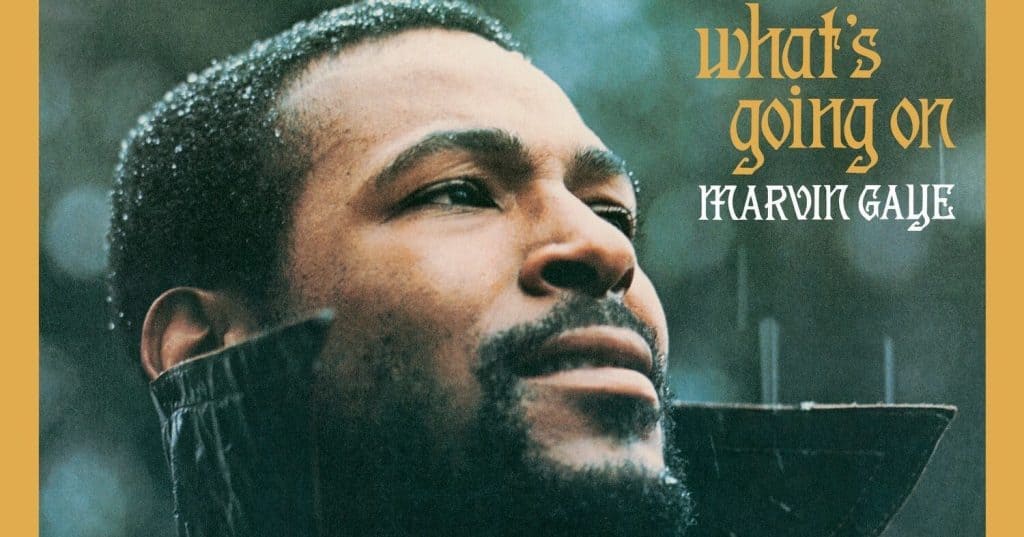
Did You Know:
Memory can start to decline as early as your 30s, but simple, science-backed techniques can help keep your mind sharp. From paying closer attention and saying things out loud to creating associations and challenging your brain daily, there are effective ways to strengthen recall and boost long-term memory. Here are some more helpful tips. Continue reading “Keener Today – May 21” →
Keener Today – May 20

Did You Know:
How your new ID can make the Airport TSA Line move faster: Some U.S. airports now use Credential Authentication Technology (CAT), allowing travelers to pass through TSA checkpoints with just a photo ID instead of a boarding pass. While this streamlines security, you’ll still need your boarding pass at the gate since airlines don’t have access to CAT systems. https://dailypassport.com/you-no-longer-have-to-show-tsa-your-boarding-pass-at-some-airports/ Continue reading “Keener Today – May 20” →
Keener Today – May 19

Did you know:
Zak Starkey, is out again. The Who proves once more that they are the most dysfunctional family in Rock and Role, firing their longtime drummer and son of Ringo Starr for a second time, just two weeks after being reinstated by the band. Though asked to claim he quit voluntarily, Starkey refused, saying he would never walk away from a band he loves. Pete Townshend confirmed the change via Instagram, announcing Scott Devours as the new drummer for The Who’s farewell tour. Continue reading “Keener Today – May 19” →

